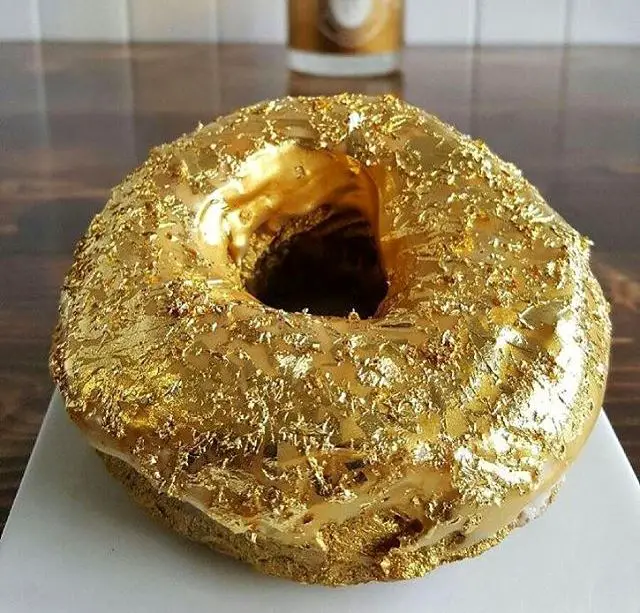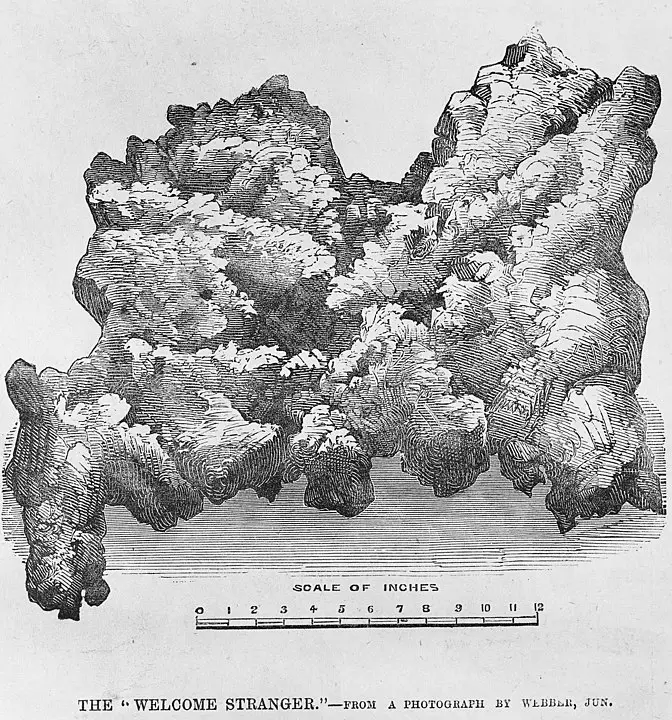There are a lot of little-known, interesting facts about gold, which is element number 79 on the periodic table. Its element symbol Au comes from aurum which is the Latin name for gold, and is translated as ‘shining dawn’.
Gold comes from outer space
The heat necessary to form gold cannot be generated naturally here on earth. It is widely thought that In the early stages of the earth’s formation, meteors containing gold impacted the planet from outer space. This gold is thought to be the by-product of supernovas and of the collisions of neutron stars. Most of the gold from these early events is now contained within the earth’s core.
Gold is the second most ductile metal
Gold is the second most ductile metal behind platinum. Ductility is the ability of a material to be formed or drawn into a wire. It is said that one ounce of gold can be drawn into a single wire thread over 50 miles long, at about 5 microns thick.
Gold is the most malleable metal
Malleability is the ability of a material to be hammered, rolled, or pressed into very thin sheets. Gold sheets can be made so thin as to be transparent. In fact, transparent sheets of gold are layered into the face shields of astronauts’ space suits to act as a barrier to solar radiation.

How heavy is gold
Gold is a very heavy, dense metal. A cubic centimeter of gold weighs 19.3 grams. To put it in a better perspective one cubic foot of gold weighs well over half a ton at 1206 pounds. In comparison, one cubic foot of lead, which most people think of as a very heavy metal weighs only 708 pounds.
Gold is a noble metal
Gold, silver, and the platinum group metals are all noble metals. This means they are unreactive, will not corrode, oxidize, or rust, even at high temperatures. and are resistant to acids, Gold is a very stable and unreactive metal.
Gold as a conductor
Gold is the second-best electrical conductor metal, behind silver. In computer processors and circuitry, however, gold is usually used because it does not tarnish as silver does. Silver tarnish leads to a skin effect that reduces conductivity.
Gold in seawater
There is a lot of gold in the world’s ocean waters, although not as much as thought in years past. It was once thought that it might be profitable to recover this colloidal gold. Recent studies estimate it at about 20 million tons of gold. This concentration is probably not enough to be profitable, although other studies suggest that in the deeper ocean areas the concentration of gold in seawater is much higher.
Gold in jewelry
It is said that most of the gold in today’s new jewelry was actually mined over 100 years ago.
Gold is quite soft, and in its pure form (24 karats) it scratches easily, and will even become worn down within a few years. For this reason, it is always alloyed or mixed with other, harder metals to make it more durable.
Chart of gold purity
- 24 karat – 99.9 percent gold
- 22 karat – 91.7 percent gold
- 18 karat – 75 percent gold
- 14 karat – 58.3 percent gold
- 12 karat – 50 percent gold
- 10 karat – 41.7 percent gold
This chart can be used to quickly determine how much gold percentage by weight (and value) is contained in a piece of gold jewelry.
Colored gold jewelry
Different colored gold jewelry has become quite popular in recent years. In fact, it often sells for more than in its yellow form. What jewelers don’t tell you is that colored gold is not natural, and in fact is good old yellow gold mixed with other less valuable metals to impart the different colors.
Rose gold
For example, a piece of 14 karat rose gold jewelry would still contain 58.3 percent gold. It is normally alloyed with 8.2 percent silver and 33.5 percent copper which gives it its reddish rose color.
White gold
An 18 karat piece of white gold jewelry would still be 75 percent pure gold mixed with a 25 percent alloy of nickel and zinc to give it its whitish tint.
Black gold
So-called black gold is created with a different process than white or rose gold. Black gold is usually a mix of three parts gold and one part cobalt. This mixture is then usually electroplated onto a base metal. There are other methods, but care should be taken as a lot of this material can be overpriced.
Can gold be made
Technically, yes, gold can be synthesized, or man-made. Alchemists back in medieval times tried for hundreds of years to make gold, usually from lead, but it was never a success. Today gold can be made by bombarding another metal, usually mercury in an uncontrolled nuclear reaction. Not too feasible, right? It would obviously cost many times the value of any gold produced. Not to mention that gold synthesized in this manner is highly radioactive.
Edible gold
Gold is non-toxic, odorless, and tasteless. It is chemically and biologically inert and will pass through the body without being absorbed. So, scientifically, there are neither benefits nor negative consequences from ingesting gold. Gold is approved as a food additive by both the United States and the European Union. The Hard Rock cafe sold a “24 karat Gold Leaf Steak Burger”. It is most often used as a baking confection and mixed in liquours. The ingestion of gold is claimed by some to have many health benefits, and there are many world cultures that have ingested gold, dating back thousands of years.

Gold in medicine
In 1890 it was discovered that gold treatments helped to slow the growth of the bacteria that caused tuberculosis. Today gold treatments are sometimes used to help reduce the pain and swelling caused by rheumatoid arthritis. Gold compounds are used to detect and treat several types of cancer, also to treat HIV and malaria. Gold alloys are implanted in delicate areas of the body including heart stents, eyelid closures, voice prosthetics, and for the reconstruction of the middle ear. Gold nanoparticles are even being used today for cellular research.
The world’s gold
According to the World Gold Council, the world’s total gold amounts by use, for the end of the year 2019 are as follows:
- Jewelry – 47% – 102,457 tons
- Private investment – 21.6% – 46,979 tons
- Official holdings – 17.2% – 37,389 tons
- Other – 14.2% – 30,964 tons
- Below ground reserves – 59,525 tons
The vast majority of all the gold ever produced is still accounted for. In recent years though some of this gold is gradually disappearing. Mostly due to discarded electronic components that are ending up in landfills, instead of being properly recycled. The world’s gold mining operations add from 2,500 to 3,000 tons to the total, each year.
Worlds largest gold nuggets
Largest gold nugget ever found
Known as the “Welcome Stranger” this 173 pound (78 kg.) nugget was found in Australia in 1869 by prospectors John Deason and Richard Oates. Found only an inch or so down at the base of a tree, the Welcome Stranger nugget was melted down and refined for its gold value.

Largest gold nugget still in existence
The Pepita Canaa nugget was found at the Serra Palada Mine in Brazil in 1983 and weighs in at 134.1 pounds (60.8 kg,).
Largest gold nugget found in the USA
Named “The Monumental” this nugget weighed approximately 106 pounds (48 kg.). It was found by a group of five prospectors on a mining claim in the Sierra Buttes area of northern California in 1869. Sold to a wealthy San Francisco hotel owner for $21,637.
Want to find some gold ? Here are some posts to get you started.